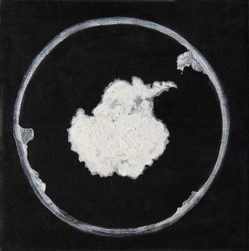 |
| (...) Jenes mal konnten sie, zum Glück, im ersten Hotel für Touristen übernachten, welches der Senator unter seinem Namen mit Geld des Staates gebaut hatte (...). |
Montag, 12. Mai 2025
Nobel
Sonntag, 11. Mai 2025
So schaut's aus - Über Konstanten in unsicheren Zeiten
 |
| Beilage der Frankfurter Allgemeinen Sonntagszeitung vom 11. Mai 2025 |
Und dazu ein wenig Geschichte:
2008 erschien Julia Friedrichs, Gestatten: Elite. Im Mai des selben Jahres erblickte dieser Blog das Licht der Welt:
Sonntag, 18. Mai 2008
VON ERLACH
Seit ich 2004 aus Kalifornien wieder nach Deutschland übersiedelt bin, wo ich sogar meinen Bankberater und meine Ärztin mit Vornamen angesprochen habe und sie mich liebevoll 'Honey' oder 'Sweetheart' nannten, springen mir die VONs in allen Zeitungen und Zeitschriften entgegen. Immer mit viel Bedeutung und Wichtigkeit gepaart.
Vorallem wenn es um das Berliner Gesellschaftsleben geht, über welches ja neuerdings in jeder Zeitschrift im Flugzeug zu lesen steht, hat das 'von' wieder Hochkonjunktur.
Aber auch bei viel alltäglicheren Dingen drängt das kleine Wort nach vorne, will gehört und gelesen werden.
Neulich war ich bei meinem Zahnarzt in Moabit, dem ich schon 20 Jahre die Treue halte.
Mit mir im Wartezimmer saß ein gut gekleideter junger Herr im dunklen Anzug mit Hornbrille, die FAZ studierend.
Ich war beschäftigt mit meiner Versichertenkarte und mit meiner Angst vor der Behandlung.
Die Sprechstundenhilfe näherte sich und rief in den Raum: "Freiherr von L....... !"
Das riß mich aus meiner Beschäftigung mit mir selbst auf banalsten körperlichen Ebenen und gleichzeitig reagierte ich auf eben diesen... Meine Zähne sind noch fest, sonst wäre mir sicher in diesem Moment die Prothese aus dem Mund gefallen.
So fiel mir anstatt dessen die Kinnlade runter und ich schaute entgeistert dem Freiherrn direkt in die Augen.
Dieser faltete seine Zeitung, erhob sich und schritt maßvoll 'gen Behandlungszimmer, um sich vermutlich eine Goldkrone anpassen zu lassen.
Für den Rest des Tages, ja der Woche, litt ich unter Kopfschmerzen und Schlafstörungen.
Spätestens mit diesem Ereignis wurde mir immer deutlicher: Auch für mich ist es an der Zeit, meinem 'von' nachzuspüren, das mir so lange aus der Biographie gerutscht war.
Ich bekenne hiermit: Ich bin eine von Erlach! Ich hatte es vergessen, verdrängt, sträflich vernachlässigt, hatte mich mit meinem bürgerlichen Namen zufrieden gegeben.
Das soll ab heute anders sein! Ich fühle mich verpflichtet, von Gottes Gnaden. Und Gottes Gnade helfe mir, daß mein 'von' auch mir zu Ruhm und Ehre gereiche!
Montag, 17. Juni 2024
... ich weiß halt jetzt nur nicht,
... ob diese Partei, die jetzt soviele gewählt haben, tatsächlich in der Lage ist, über die Bitterkeit und den Schmerz über gescheiterte Ehen und zerbrochene Familien hinwegzutrösten... also ich glaube es ja nicht.
Freitag, 14. Juni 2024
Donnerstag, 19. Oktober 2023
Mittwoch, 18. Oktober 2023
Avantgarde
 |
| Ingeborg Bachmann, Das dreißigste Jahr, Seite 116, Piper, München, 2. Auflage 1999 |
" ...Vorurteile - die Rassenvorurteile, Klassenvorurteile, religiösen Vorurteile und alle anderen - bleiben ein Schimpf, selbst wenn sie durch Belehrung und Einsicht schwinden. Die Abschaffung von Unrecht, von Unterdrückung, jede Milderung von Härten, jede Verbesserung eines Zustandes hält doch noch die Schimpflichkeit von einst fest. Die Schändlichkeit, durch das Fortbestehen der Worte festgehalten, wird dadurch jederzeit wieder möglich gemacht. "Keine neue Welt ohne neue Sprache".
Ingeborg Bachmann, Das dreißigste Jahr, Seite 116, Piper, München, 2. Auflage 1999
Freitag, 14. Juli 2023
on the way to something new
 |
| Ute Brönner, silk screen printing on textile in the process of making, July 2023 |
Derzeit arbeite ich in der Druckwerkstatt des Künstlerhauses Bethanien in Berlin-Kreuzberg an einem neuen Werk: Die Abbildung eines Demonstrationsbanners anlässlich der Demonstration am 5. Juni 2023 gegen das geplante Abschiebezentrum am BER, Flughafen Berlin-Brandenburg. Die klimatischen Rahmenbedingungen der Demonstration: Circa 30 Grad im Schatten und sengende Hitze in praller Sonne.
Der
Protest, der weit außerhalb des Stadtzentrums von Berlin, vor dem bestehenden Abschiebegefängnis und neben dem
Rollfeld des Flughafens, dort, wo das neue Abschiebezentrum durch die Brandenburger Regierung gebaut werden soll, stattfand, wird dadurch auf neue Weise im Kontext der urbanen (Kultur-) Diskussion sichtbar
gemacht.
Die genaue Durcharbeitung, die Liebe und Fürsorge, mit der das Banner gemacht ist, versetzten mich in bewunderndes Staunen und haben mich dazu veranlasst, ihm ein Kunstwerk zu widmen und es im Kontext des Protestes wiederum auf Textil zu drucken. Die Gegenstände, mit denen das Banner auf dem rissigen Beton, der glaube ich noch aus DDR-Zeiten stammt, fixiert ist, zeugen weit draußen in einem Irgendwo aus Baracken und Stacheldraht von Menschlichkeit: Wasser sowie benutzte Teller, aus denen vor Kurzem von irgendjemandem aus der Demo gegessen wurde.
Das Banner wird die Größe 110x150 cm haben und in Schwarz-Weiß gedruckt. Die Buchstaben werden in Rot hervorgehoben.
Ich kann die Größe dieses Drucksiebes nicht alleine bewältigen. Zu groß, zu schwer. Das geht nur gemeinschaftlich. Mit Hilfe. Auch beim Ausschneiden und Isolieren der Buchstaben mit Skalpellen, als Vorbereitung für die beiden Drucksiebe, hatte ich heute Hilfe. Wir führten während der Arbeit leise Gespräche, u.a. auch über den Protest. Wir entdeckten immer neue Dinge im Motiv und fanden es zunehmend vielschichtig: Die Menschlichkeit im Vordergrund, die Risse im Beton sowie den Stacheldraht, die Polizeifahrzeuge und das bestehende Abschiebegefängnis im Hintergrund.
Die Ausschneidearbeit und das anschließende Fixieren der Buchstaben in der richtigen Anordnung auf einer Folie erfordern Präzision und Geduld. Die Leute in der Druckwerkstatt blieben immer mal wieder stehen und erkundigten sich, wie wir vorankommen. Und ich dachte bei all dem, dass dieses abgebildete Banner höchstwahrscheinlich genau so entstanden ist: in gemeinschaftlicher Handarbeit irgendwo in Berlin auf einem großen Tisch, begleitet von Gesprächen und hin und wieder vielleicht heiterem Lachen und Kaffeepausen.
Nächste Woche beginne ich mit dem Druck.
Mittwoch, 21. Juni 2023
antarctica
Dienstag, 13. Juni 2023
Mittwoch, 7. Juni 2023
Quizfrage im Juni 2023
Was unterscheidet TRUMP von der EU?
Für Antwort bitte nach unten scrollen*
*Antwort: TRUMP wollte Mauern. Die EU will Zäune aus Stacheldraht. #GEAS



